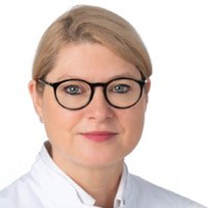Sie befinden sich hier
Inhalt
Translational Pruritus Research „PruSearch”
Chronic pruritus is a highly prevalent cause of suffering and reduced quality of life in patients worldwide, yet our understanding of its basic neurophysiology and of clinically relevant pathomechanisms is limited as are current treatment options. On the other hand, molecular, cellular and even functional characterization of neuronal itch pathways in mice have lifted our understanding of pruritus in this species to a higher level. Our research unit PruSearch set out using this groundbreaking new information from rodents to uncover clinically relevant itch mechanism in patients with inflammatory, neuropathic, and systemic itch. We have established a collaborative multidisciplinary network using basic science methods in a patient-centred approach. Neurophysiologic characterization of pruriceptive and nociceptive sensory neurons in humans and relevant models addresses the translational challenge and optimizes electrical stimulation paradigms for clinical use. Based on comprehensive clinical phenotyping we are characterizing structure-function relations in the different disease entities linking patient reported outcomes to responsiveness to C-fiber specific functional tests, skin expression patterns, innovative structural parameters of epidermal nerve fibers, and central activation patterns in a standardized fashion.
While keeping the highly successful basic concept of the first funding period of our research unit, we have decided to advance particularly in our attempt to investigate structure/function relations and strengthen our approaches towards specificity and causality. Key new elements are the inclusion of local external factors (microbiome), characterization of non-myelinating Schwann cells, and generation of functionalized molecularly defined pruriceptors in relevant models. Longitudinal observations will be used to test for the external validity of our functional and structural markers. Thus, we have refined our key objectives from the first funding period
a) Identify crucial mediator systems for inflammatory and non-inflammatory pruritus in chronic itch patients and validate their external validity
b) Identify structure/function relations between neuronal and non-neuronal cells that determine itch intensity in chronic pruritus
c) Identify common and possibly disparate mechanisms of neuronal sensitization between inflammatory, neuropathic, and systemic itch, but also between chronic neuropathic itch and pain.
Thus, our comprehensive approach is intended to clarify the currently unclear overlap between chronic itch and pain conditions and aims for a harmonized diagnostic and therapeutical understanding and procedure. As ultimate objective of our research unit, we expect to uncover clinically relevant pathomechanisms in itch and to develop a comprehensive and mechanism-based diagnostic approach that identifies clinically relevant subgroups of inflammatory, neuropathic, and systemic itch and allows optimization of the specific treatment.
Kontextspalte

FOR 2690 – Translational Pruritus Research „PruSearch”
Ludolf-Krehl-Str. 13 – 17
68167 Mannheim
FOR2690@medma.uni-heidelberg.de
Spokesperson

Prof. Dr. med. Martin Schmelz
Director Dept. for Experimental Pain Research
Medical Faculty Mannheim, Heidelberg University
Phone +49 621 383-71650
martin.schmelz@medma.uni-heidelberg.de
Vice Spokesperson

Prof. Dr. med. Dr. h. c. Sonja Ständer
Head of Center for Chronic Itch,
Department of Dermatology,
University Hospital Münster, Germany
Phone +49 251 83-57470
sonja.staender@uni-muenster.de
Project Coordinator

Ilona Rossbach
Dept. for Experimental Pain Research
Medical Faculty Mannheim, Heidelberg University
Phone +49 621 383-71650
ilona.rossbach@medma.uni-heidelberg.de
